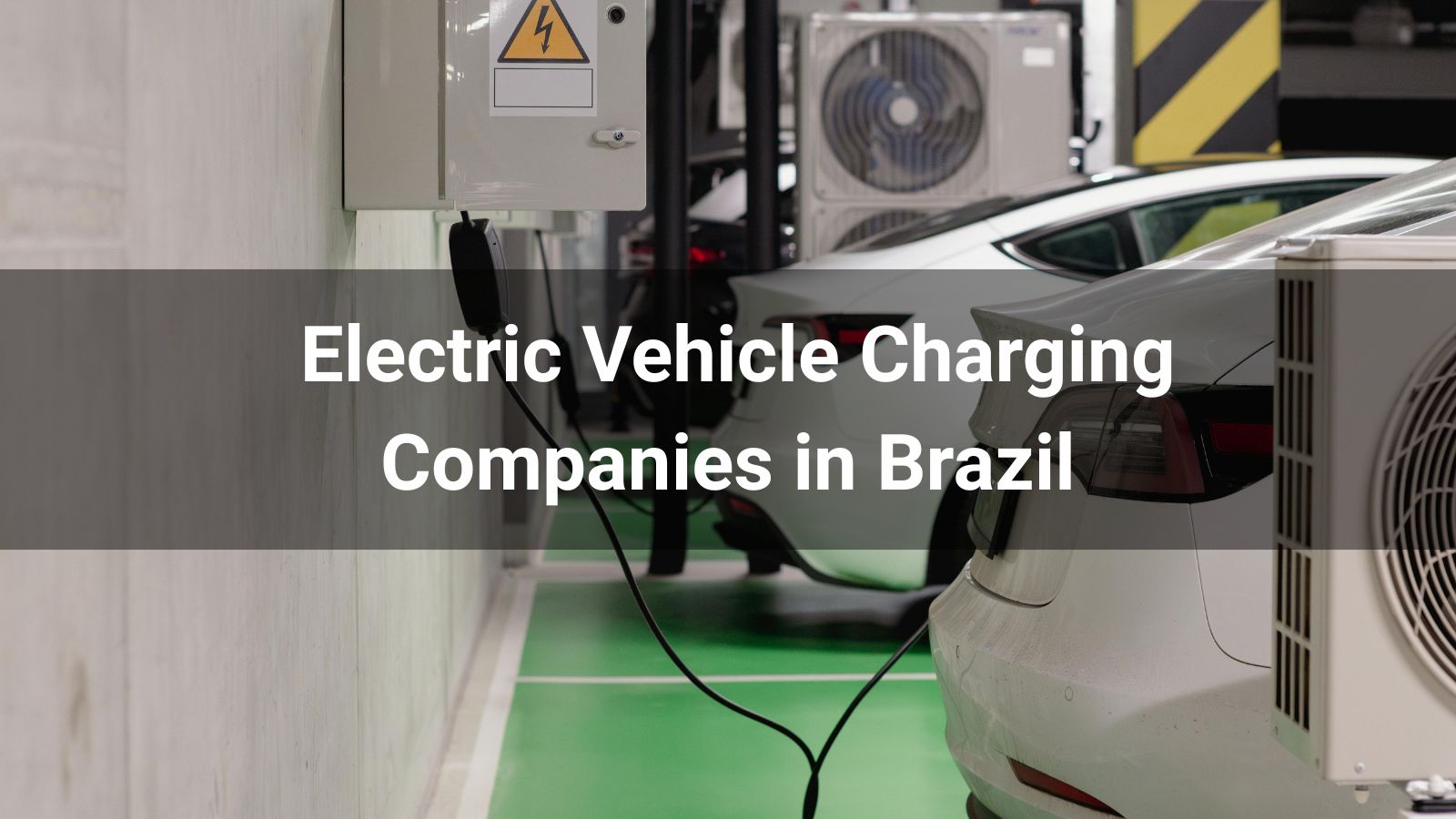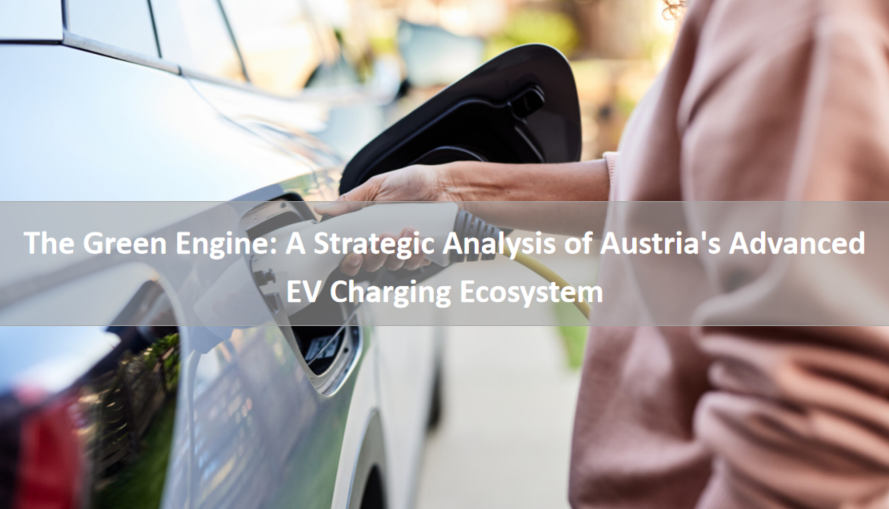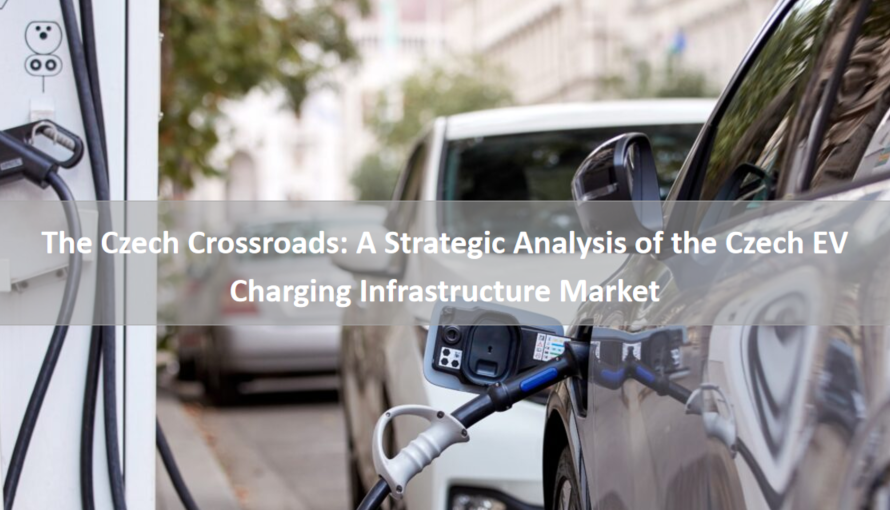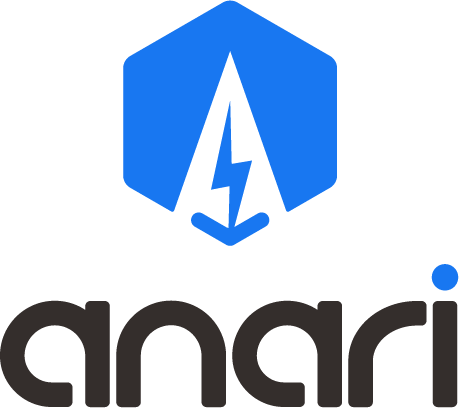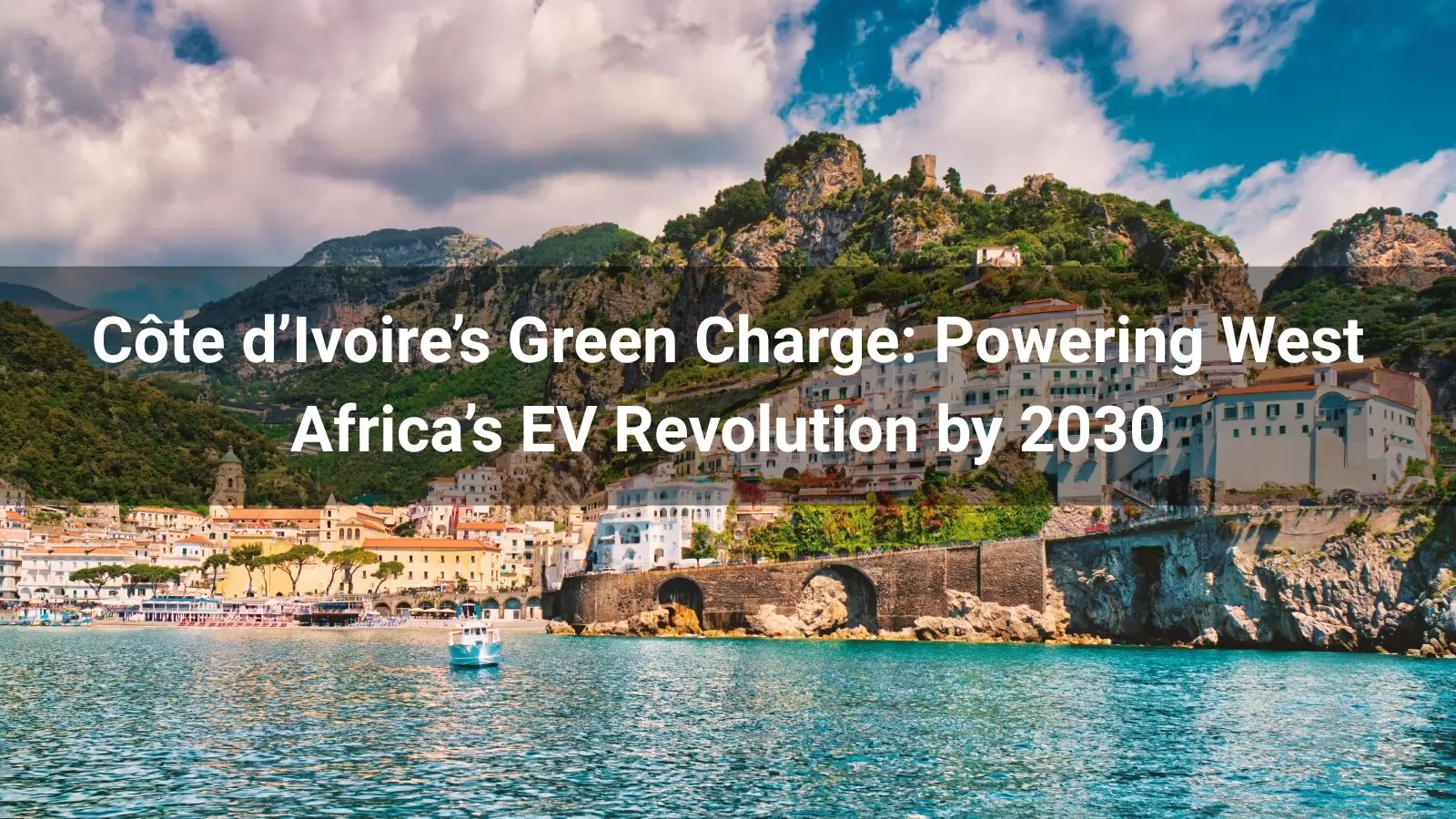
Côte d’Ivoire is emerging as a frontrunner in West Africa’s electric vehicle (EV) transition, driven by ambitious policies, a robust electricity sector, and private-sector innovation. This report analyzes the national policies, market size, development status, opportunities, and challenges of EV charging stations in Côte d’Ivoire within a structured framework. National policies, including tax exemptions and the National Development Plan (NDP) 2021–2025, aim to electrify 10% of the vehicle fleet by 2030, supported by renewable energy expansion. The EV market, though nascent, is projected to grow from USD 0.06 billion in 2025 to USD 0.30 billion by 2030 at a CAGR of 38.0%, fueling demand for charging infrastructure. Development is progressing with around 30 public charging stations, led by private initiatives like Pétro Ivoire’s solar-powered chargers. Opportunities include leveraging Côte d’Ivoire’s 94% electrification rate, regional trade corridors, and battery-swapping models, while challenges such as high electricity costs, regulatory gaps, and consumer awareness persist. Strategic recommendations focus on accelerating infrastructure deployment, finalizing regulations, and integrating renewables to cement Côte d’Ivoire’s leadership in sustainable mobility.
Côte d’Ivoire’s national policies for EV charging infrastructure are progressive, leveraging tax incentives, renewable energy programs, and the NDP 2021–2025 to drive EV adoption. However, regulatory frameworks and fiscal constraints require further development to ensure scalability.
Côte d’Ivoire’s policy framework aligns with its commitment to sustainable development and regional energy leadership, supported by a privatized electricity sector and international partnerships. Key policy elements include:
The government offers full customs duty exemptions and reduced VAT for EVs, lowering acquisition costs and stimulating demand. These measures, introduced under the NDP 2021–2025, mirror Morocco’s tax exemptions that have boosted EV uptake.
The Ministry of Transport is exploring subsidies for charging station installations, targeting private operators like Pétro Ivoire, similar to Austria’s model of up to USD 32,320 for DC chargers.
The NDP 2021–2025 targets 10% electrification of the vehicle fleet by 2030, with plans to deploy charging infrastructure along north-south and east-west axes to support intercity travel. This aligns with regional strategies like Kenya’s E-mobility Policy.
The plan emphasizes public and corporate fleet electrification, with initiatives like Pétro Ivoire’s focus on corporate fleets, drawing on Uruguay’s public fleet model to build consumer confidence.
Côte d’Ivoire’s 94% electrification rate, achieved through privatization and investments like the Azito Thermal Power Plant expansion, provides a strong foundation for EV charging. The country aims for 42% renewable energy by 2035, with projects like the 60 MW Scaling Solar Initiative supporting green charging hubs.
The Ministry of Energy and CI-Energies promote smart grid solutions, such as vehicle-to-grid (V2G) systems, to optimize grid usage, though implementation is nascent.
The absence of finalized standards for charging infrastructure, such as connector types (e.g., CCS2, CHAdeMO) or interoperability protocols like OCPP, creates uncertainty for investors. This mirrors challenges in Angola, where regulatory fragmentation hinders progress.
Neo-colonial influences, with foreign companies dominating the energy sector, may prioritize international interests over domestic development, complicating policy implementation.
Côte d’Ivoire’s EV market is small but rapidly growing, projected to increase from USD 0.06 billion in 2025 to USD 0.30 billion by 2030 at a CAGR of 38.0%, driving demand for charging infrastructure. The charging station market, though limited, is poised for expansion to support this growth.
Côte d’Ivoire’s EV market is estimated at 1,200 vehicles in 2025, primarily two- and three-wheelers and corporate fleets in Abidjan. By 2030, this is projected to reach 12,000 vehicles, driven by tax incentives and rising fuel costs. The CAGR of 38.0% exceeds global averages, reflecting regional potential.
This growth aligns with Sub-Saharan Africa’s (SSA) trends, where EV adoption is accelerating, though Côte d’Ivoire lags behind South Africa’s 1.8 chargers per 10 EVs.
As of 2025, Côte d’Ivoire has approximately 30 public charging stations, with Pétro Ivoire’s solar-powered chargers in Abidjan and Bouaké leading the way. Plans for nationwide expansion target a 10:1 EV-to-charger ratio by 2030.
The global EV charging market, projected to grow from USD 30.63 billion in 2025 to USD 257.33 billion by 2032 at a CAGR of 35.5%, provides a benchmark for Côte d’Ivoire’s potential.
Compared to Morocco’s 300 chargers or Kenya’s 20, Côte d’Ivoire’s infrastructure is limited but growing faster than Angola’s nonexistent network.
The focus on corporate fleets and two-wheelers, as seen in Kenya’s matatu market, suggests a niche for targeted charging solutions.
Côte d’Ivoire’s EV charging infrastructure is nascent, with around 30 public charging stations concentrated in Abidjan and Bouaké, driven by private initiatives like Pétro Ivoire. Grid reliability and renewable energy projects support progress, but urban-centric deployment limits scalability.
Côte d’Ivoire has approximately 30 public charging stations, primarily Level 2 solar-powered chargers in Abidjan (e.g., Yopougon Gandhi) and one in Bouaké, operated by Pétro Ivoire. These serve corporate fleets and two-wheelers but are insufficient for widespread adoption.
The infrastructure supports a small EV fleet, with charging times of 4-6 hours for light-duty vehicles, exacerbating range anxiety for intercity travel.
Pétro Ivoire leads solar-powered chargers and collaborates with local manufacturers for batteries and equipment, reducing reliance on imports. This mirrors South Africa’s partnerships with Audi and Grid Cars.
International support, such as the IFC’s USD 400 million investment in the Azito and CIPREL plants, strengthens the electricity sector, indirectly supporting charging infrastructure.
Côte d’Ivoire’s 94% electrification rate and 2,230 MW installed capacity, with 42% renewable energy targeted by 2035, enable sustainable charging. The 60 MW Scaling Solar Initiative supports co-located chargers, as seen in Kenya’s geothermal model.
Smart charging pilots, supported by CI-Energies, aim to optimize grid usage, though grid upgrades are needed to handle EV demand.
The grid, while robust, faces peak load challenges, with 10% of generation exported regionally. Uncoordinated charging could strain the system, as noted by the IEA.
Lack of standardized connectors risks compatibility issues, similar to Japan’s CHAdeMO challenges.
Côte d’Ivoire’s EV charging infrastructure market offers significant opportunities, driven by its high electrification rate, private-sector innovation, and regional trade corridors. Battery-swapping models and renewable energy integration can accelerate adoption.
Côte d’Ivoire’s 94% electrification and renewable energy projects, like the 46 MW Ayébo biomass plant, support green charging hubs. Co-locating chargers with solar or biomass projects reduces costs, as in China’s BYD model.
Smart charging and V2G systems, as in Europe’s ISO 15118-20 standard, can optimize grid usage and create revenue streams.
Pétro Ivoire’s initiatives and IFC-backed projects demonstrate private-sector potential. Partnerships with global firms like ABB, as in Morocco, can bring expertise and funding.
The World Bank’s Scaling Solar Initiative and CI-Energies’ grid upgrades can support pilot charging projects, mirroring Kenya’s aid-driven model.
The Abidjan–Lagos Highway, a 1,028 km project connecting Côte d’Ivoire to Nigeria, supports charging corridors for logistics vehicles, enhancing regional connectivity.
Demand for electric two- and three-wheelers, as seen in Kenya, offers a niche for urban charging hubs in Abidjan.
Battery-swapping stations, successful in China with 50% of heavy-duty trucks using this model, could suit Côte d’Ivoire’s two-wheeler market, reducing charging times to 3-5 minutes.
Models like Rwanda’s Ampersand, with 37,000 monthly swaps, provide a replicable framework for Abidjan.
Côte d’Ivoire’s EV charging infrastructure faces challenges, including high electricity costs, limited infrastructure, regulatory gaps, and low consumer awareness. Coordinated efforts are needed to ensure scalability and adoption.
High electricity tariffs, averaging USD 0.15/kWh, deter EV adoption despite a 2,230 MW capacity. This mirrors SSA’s cost-related barriers, as noted in ScienceDirect studies.
Competitive pricing, as proposed in Kenya’s E-mobility Policy, is critical to reducing costs and driving demand.
With only 30 chargers, primarily in Abidjan, infrastructure is insufficient for intercity travel, exacerbating range anxiety. The IEA notes this as a global barrier.
Rural areas lack chargers, requiring expansion plans like Morocco’s highway-focused strategy.
The absence of standardized connectors and interoperability protocols, like OCPP, risks compatibility issues, as seen in Latin America.
Neo-colonial influences, with foreign firms dominating the energy sector, may prioritize external interests, complicating domestic development.
Limited awareness of EV benefits and high upfront costs deter adoption, as seen in SSA. Range anxiety, noted by PwC, is exacerbated by sparse infrastructure.
Public education, as implemented in Kenya, is critical to building consumer confidence.
Fast-track NDP targets to deploy 500 chargers by 2028, prioritizing highways and urban centers like Abidjan and Bouaké. Focus on fast chargers, as in the U.S. NEVI program.
Pilot battery-swapping stations for two-wheelers, drawing on China’s model, to reduce charging times.
Adopt global standards like OCPP and ISO 15118 for interoperability and safety, ensuring compatibility across EV models.
Establish competitive electricity tariffs for EV charging, leveraging CI-Energies to subsidize costs, as in Kenya.
Expand Pétro Ivoire’s partnerships with global firms like ABB, offering tax breaks to offset costs, as in Austria. Engage IFC and World Bank for funding, mirroring Morocco’s model.
Leverage the Abidjan–Lagos Highway to develop charging corridors, enhancing regional trade.
Launch campaigns using platforms like Electromaps to highlight charger locations and EV benefits. Address range anxiety through test drives, as in Kenya.
Introduce leasing models to reduce upfront EV costs, drawing on China’s incentives.
Co-locate chargers with solar and biomass projects like Ayébo, using battery storage to manage peak loads, as in China’s BYD model.
Pilot V2G systems to provide grid services, enhancing economic viability, as in Europe.
Côte d’Ivoire is poised to lead West Africa’s electromobility transition, supported by progressive policies, a robust electricity sector, and private-sector innovation. The projected EV market growth to USD 0.30 billion by 2030 and plans for nationwide charging expansion reflect ambition, but high electricity costs, limited infrastructure, and regulatory gaps pose challenges. By leveraging its 94% electrification rate, renewable energy projects, and innovations like battery swapping, Côte d’Ivoire can build a sustainable charging ecosystem, enhancing its role as a regional energy hub and contributing to global climate goals.
Read more:

